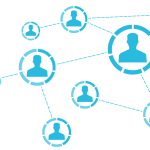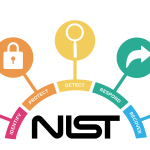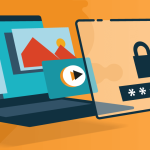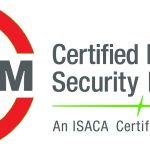As cyberattacks grow more sophisticated and enterprise IT becomes more complex, organizations are finding that traditional, piecemeal security strategies no longer suffice. According to a joint global study conducted by IBM and Palo Alto Networks, the average enterprise juggles 83 different security tools from 29 vendors, creating a fragmented environment where integration gaps … [Read more...] about How Unified Cybersecurity Platforms Add Business Value
cybersecurity
Examples of NIST CSF 2.0 Implementation
The NIST Cybersecurity Framework (CSF) 2.0 provides a comprehensive roadmap for translating cybersecurity principles into real-world practices across diverse sectors. These examples span core governance elements—like aligning cybersecurity strategies with an organization’s mission and risk tolerance—and extend into detailed areas such as asset management, identity and access … [Read more...] about Examples of NIST CSF 2.0 Implementation
Top 5 Governance, Risk, and Compliance (GRC) Tools and Solutions for 2025
The demand for Governance, Risk, and Compliance (GRC) tools has surged as businesses face mounting regulatory pressures, cybersecurity threats, and stakeholder expectations for ethical conduct. GRC platforms help companies centralize and automate their risk assessments, compliance reporting, and internal controls, transforming what were once disjointed manual processes into … [Read more...] about Top 5 Governance, Risk, and Compliance (GRC) Tools and Solutions for 2025
Deepfake Deception in Digital Identity
Deepfake deception has rapidly emerged as a critical cybersecurity and identity verification threat, with AI-generated content capable of replicating human likenesses to an alarming degree. Powered by machine learning models like GANs and autoencoders, deepfakes can convincingly mimic voices, faces, and gestures, enabling cybercriminals to deceive targets through manipulated … [Read more...] about Deepfake Deception in Digital Identity
NIST Whitepaper: Considerations for Achieving Crypto Agility
Crypto agility refers to the ability to seamlessly update or replace cryptographic algorithms in applications, protocols, and infrastructure without causing operational downtime or compromising security. The NIST white paper Considerations for Achieving Crypto Agility outlines a strategic approach for transitioning cryptographic systems in response to evolving threats, such as … [Read more...] about NIST Whitepaper: Considerations for Achieving Crypto Agility
Book Review: “NIST CSF 2.0: Your essential introduction to managing cybersecurity risks”
Andrew Pattison’s A Concise Introduction to the NIST CSF 2.0 delivers exactly what the title promises: a focused, readable guide to understanding and applying the new version of the National Institute of Standards and Technology’s Cybersecurity Framework (CSF). As digital threats grow more sophisticated and public expectations around data protection rise, the importance of … [Read more...] about Book Review: “NIST CSF 2.0: Your essential introduction to managing cybersecurity risks”
Navigating GenAI Ethics: A Review of Its Regulatory Landscape and a Proposed Framework
This paper presents a structured framework to guide the ethical governance of Generative AI systems, acknowledging that GenAI’s creative capacity introduces risks and complexities not adequately addressed by traditional AI standards. Aboitiz Data Innovation (ADI) argues for a lifecycle-based approach that integrates ethical principles at every phase—from problem definition and … [Read more...] about Navigating GenAI Ethics: A Review of Its Regulatory Landscape and a Proposed Framework
Which industry has the worst cybersecurity practices?
Summarizing nearly 500 Reddit comments from cybersecurity professionals and followers, healthcare emerges as the most frequently cited industry with the worst cybersecurity practices. Stories range from hospitals storing patient data on unencrypted personal laptops to X-ray machines operated through unsecured remote access points. Many healthcare professionals—especially … [Read more...] about Which industry has the worst cybersecurity practices?
Achieving Cross-Sector Cybersecurity Performance Goals
In response to growing cyber threats across the U.S. critical infrastructure landscape, the Cybersecurity and Infrastructure Security Agency (CISA) introduced the Cross-Sector Cybersecurity Performance Goals (CPGs). These goals are a practical, risk-based subset of both IT and operational technology (OT) cybersecurity practices developed in collaboration with industry and … [Read more...] about Achieving Cross-Sector Cybersecurity Performance Goals
2025 Cybersecurity Salary Guide for Professionals
The 2025 Cybersecurity Salary Guide from the United States Cybersecurity Institute (USCSI®) vividly describes a booming, high-stakes job market shaped by global instability, AI-driven cyberattacks, and escalating digital adoption. Geopolitical conflicts, sophisticated ransomware, and persistent data breaches are fueling an unprecedented demand for cybersecurity professionals … [Read more...] about 2025 Cybersecurity Salary Guide for Professionals
A Complete Guide to Third-Party Risk Management
Third-party relationships are vital to business operations, but they also pose significant security risks. Outsourcing to vendors and other external entities exposes organizations to potential data breaches, with third-party vulnerabilities ranking among the top causes of security incidents. The 2022 IBM and Ponemon Institute report highlights that third-party software … [Read more...] about A Complete Guide to Third-Party Risk Management
How to Perform a Successful IT Risk Assessment
Conducting an IT risk assessment is essential for organizations facing increasing cyber threats, with cyberattacks occurring every 40 seconds and ransomware attacks rising rapidly. An IT risk assessment identifies vulnerabilities within an organization’s information systems, networks, and data, helping leaders understand potential financial and operational impacts. Such … [Read more...] about How to Perform a Successful IT Risk Assessment
Regulating AI: Expert Insights on Compliance, Risk, and Security
AI regulations are developing globally as governments strive to ensure artificial intelligence's safe and ethical use across industries. Frameworks such as the OECD AI Principles and the EU AI Act address issues like transparency, accountability, and risk management. However, navigating compliance presents complexities, especially for organizations integrating AI into their … [Read more...] about Regulating AI: Expert Insights on Compliance, Risk, and Security
10 Best Vulnerability Assessment and Penetration Testing (VAPT) Tools in 2025
Vulnerability Assessment and Penetration Testing (VAPT) tools are essential for organizations aiming to strengthen their cybersecurity defenses. Vulnerability assessments identify potential weaknesses in systems, while penetration testing simulates attacks to determine if these vulnerabilities are exploitable. Together, they provide a comprehensive security evaluation that … [Read more...] about 10 Best Vulnerability Assessment and Penetration Testing (VAPT) Tools in 2025
SOC 2 vs ISO 27001: What’s the Difference and Which Standard Do You Need?
SOC 2 and ISO 27001 are the most recognized frameworks for information security compliance. SOC 2, developed by the AICPA, focuses on protecting customer data through five Trust Services Criteria: Security, Availability, Confidentiality, Privacy, and Processing Integrity. It is particularly popular among US-based companies, offering flexibility in selecting applicable criteria. … [Read more...] about SOC 2 vs ISO 27001: What’s the Difference and Which Standard Do You Need?
Integrating Cybersecurity Frameworks into IT Security: A Comprehensive Analysis
Organizations face increasingly sophisticated cyber threats ranging from malware and ransomware to insider threats and state-sponsored attacks. As digital environments evolve with cloud computing and interconnected systems, cybersecurity frameworks provide structured approaches to risk management, compliance, and threat mitigation. The NIST Cybersecurity Framework emphasizes … [Read more...] about Integrating Cybersecurity Frameworks into IT Security: A Comprehensive Analysis
OWASP Releases Updated 2025 Top 10 Risks for LLMs
The OWASP Foundation has released the 2025 edition of its Top 10 Risks for LLM Applications and Generative AI, addressing the changing threat landscape as organizations increasingly adopt generative AI technologies. This refreshed list provides updated insights into vulnerabilities across development, deployment, and management phases, helping developers and security … [Read more...] about OWASP Releases Updated 2025 Top 10 Risks for LLMs
Artificial Intelligence and Cybersecurity: Balancing Risks and Rewards
AI technologies offer significant business benefits but introduce unique cybersecurity challenges that organizations must address to innovate safely. A risk-based approach is essential, involving diverse stakeholders across legal, technology, HR, compliance, and business units. Creating an inventory of AI applications helps organizations track usage, mitigate risks of "shadow … [Read more...] about Artificial Intelligence and Cybersecurity: Balancing Risks and Rewards
The Crucial Difference Between IT Security and Compliance
IT security and compliance are essential components of an organization’s risk management strategy. IT security involves proactive measures to protect systems, data, and networks from cyber threats. It encompasses technical solutions like firewalls, intrusion detection systems, and two-factor authentication, as well as fostering a security-conscious culture through employee … [Read more...] about The Crucial Difference Between IT Security and Compliance
The Benefits of CISM Certification and How to Pass the CISM Exam
The Certified Information Security Manager (CISM) certification, offered by ISACA, validates an information security professional’s ability to design, manage, and assess an organization’s information security program. CISM focuses on four key domains: Information Security Governance, Information Risk Management, Information Security Program Development and Management, and … [Read more...] about The Benefits of CISM Certification and How to Pass the CISM Exam





















